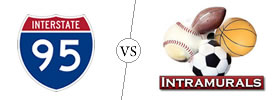Difference between Dubstep and Techno
Key Difference: Dubstep originated in the undergrounds of South London, UK in 1998 and is highly influenced by Jamaican dub. The tempo ranges between 138–142 beats per minute, with a clap or snare usually inserted every third beat in a bar. Techno, also a genre of electronic dance music is similar to Dubstep. Techno has its origins in Detroit, Michigan during the mid-to-late 1980s. The tempo is approximately between 120 beats per minute and 150 beats per minute, depending on the style of techno.
Traditionally, there were only a few select genres of music for a person to produce or listen to, but with constant technological changes, newer and newer genres have been added. Two of the fairly recent genres include Dubstep and Techno. Dubstep and Techno are both genres of electronic dance music. Though these may seem similar to a person who is not into such electronic music, it has vast differences.
 Dubstep originated in the undergrounds of South London, UK in 1998 and is highly influenced by Jamaican dub. Other influences include electronic, classical music and heavy metal. It gained popularity in the 2001s due to being promoted and showcased by a nightclub named “Forward” in London.
Dubstep originated in the undergrounds of South London, UK in 1998 and is highly influenced by Jamaican dub. Other influences include electronic, classical music and heavy metal. It gained popularity in the 2001s due to being promoted and showcased by a nightclub named “Forward” in London.
Early Dubstep looked to incorporate elements of drum and bass into the South London-based 2-step garage sound. It is generally instrumental and has very little lyrics if it must. The genre is a bit towards the dark side and the tracks frequently use a minor key and can feature dissonant harmonies such as the tritone interval within a riff. Dubstep uses instruments such as bass, sequencer, turntables, sampler, drum machine, synthesizer, keyboard, personal computer.
Dubstep rhythms are usually syncopated, and often shuffled or incorporating tuplets. The tempo ranges between 138–142 beats per minute, with a clap or snare usually inserted every third beat in a bar. One main character of Dubstep is known as the wobble bass, where an extended bass note is manipulated rhythmically. Another popular aspect is known as a ‘base drop’, during which the percussion reduces slowly into silence and then resumes with more intensity, accompanied by a dominant subbass.
Techno, also a genre of electronic dance music is similar to Dubstep. Techno has its origins in Detroit, Michigan during the mid-to-late 1980s. The first recorded form of Techno is dated back to 1988. The original techno was derived by mixing electronic music (of artists such as Kraftwerk, Giorgio Moroder and Yellow Magic Orchestra) with African American music styles. It also added futuristic themes and sounds to make it seem the music is from the future.

The term “techno” was coined for the music by producer Juan Atkins, who cited author Alvin Toffler's term “techno rebels” as inspiration for naming the genre of the music he helped produce. Techno generally has repetitive instrumental music produced for use in a continuous DJ set. The rhythmic component is most often in common time (4/4), where time is marked with a bass drum on each quarter note pulse, a backbeat played by snare or clap on the second and fourth pulses of the bar, and an open hi-hat sounding every second eighth note.
The tempo is approximately between 120 beats per minute and 150 beats per minute, depending on the style of techno. Techno uses instruments such as drum machines, synthesizers, digital audio workstations, keyboards and computers. Popular techno musicians include Underground Resistance, The Future Sound of London, The Advent, Adam X, Dave Clarke, etc.
|
|
Dubstep |
Techno |
|
Definition |
Dubstep is a genre of electronic dance music. |
Techno is a genre of electronic dance music. |
|
Origin |
South London, UK. |
Detroit, Michigan US. |
|
Influence |
Electronic, classical music, heavy metal and Jamaican dub. |
Funk, electro, electric jazz. |
|
Year |
1998 |
Mid-1980s |
|
Instruments |
Bass, sequencer, turntables, sampler, drum machine, synthesizer, keyboard, personal computer. |
Synthesizer, keyboards, sampler, drum machine, sequencer, personal computer |
|
Rhythm |
The tempo includes approximately 138-142 beats per minute. Rhythms are usually syncopated, and often shuffled or incorporating tuplets. |
The rhythm is most often in common time (4/4), where time is marked with a bass drum on each quarter note pulse, a backbeat played by snare or clap on the second and fourth pulses of the bar, and an open hi-hat sounding every second eighth note. |
|
Beats |
Faster beats approximately 138-142 beats per minute. |
Fast beats, usually repetitive beats of 120-150 beats per minute. |
|
Lyrics |
Little or no lyrics |
Little or no lyrics |
|
Popular musicians |
Skrillex, Drop the Lime, Scuba, James Blake, etc. |
The Future Sound of London, The Advent, Adam X, Dave Clarke, etc. |
Image Courtesy: synapserpg.blogspot.in, sockem.files.wordpress.com









Comments
DUBSTEP IZ DE BEST!!!!!
wolf
Sat, 05/24/2014 - 20:54
wolf2
Thu, 01/18/2018 - 22:25
Add new comment